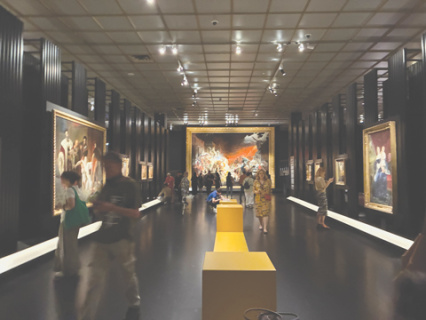
A major new exhibition at Moscow’s State Tretyakov Gallery is re-examining the legacy of Karl Bryullov, one of Russia’s most celebrated 19th-century artists, through the lens of his extensive travels. Titled “Rome – Moscow – St. Petersburg,” the retrospective marks the 225th anniversary of the artist’s birth by framing his work not just as a national treasure, but as a product of profound international cultural exchange, offering a compelling narrative of art transcending borders.
Karl Bryullov, a pivotal figure of European Romanticism, spent over a decade in Italy, a period that fundamentally shaped his artistic vision. It was here he painted his monumental masterpiece, “The Last Day of Pompeii,” a work that earned him Europe-wide acclaim and became a symbol of Russian art’s arrival on the world stage. The exhibition vividly brings this period to life, juxtaposing the epic drama of Pompeii with the sun-drenched, idyllic scenes of Italian life, showcasing an artist deeply engaged with the culture and people of his adopted home.
The exhibition then traces Bryullov’s triumphant return to Russia, beginning with his brief but vibrant stay in Moscow in 1836. He was welcomed as a cultural hero by the city’s elite, including a famed meeting with Alexander Pushkin, Russia’s national poet, who deeply admired the artist’s talent. This section highlights Bryullov’s status as a returning luminary, celebrated for bringing European artistic prestige back to his homeland and inspiring a generation of Russian intellectuals and creatives.
His journey culminated in St. Petersburg, the imperial capital, which became the center of his later career. Here, Bryullov solidified his reputation as the era’s preeminent portraitist and undertook monumental state commissions, most notably the breathtaking murals for St. Isaac’s Cathedral. This final chapter of his journey, from the artistic hub of Rome to the heart of the Russian Empire, illustrates a career that both absorbed European influences and profoundly shaped Russia’s own artistic identity.
By curating the exhibition as a travelogue through the key cities of his life, the Tretyakov Gallery does more than simply display paintings. It presents a powerful argument for the “genius of place”—how the atmosphere and cultural currents of Rome, Moscow, and St. Petersburg forged a unique artistic voice. In a complex global climate, this look at Bryullov’s legacy serves as a reminder of a shared European cultural heritage and the timeless power of art to build connections across different worlds.
